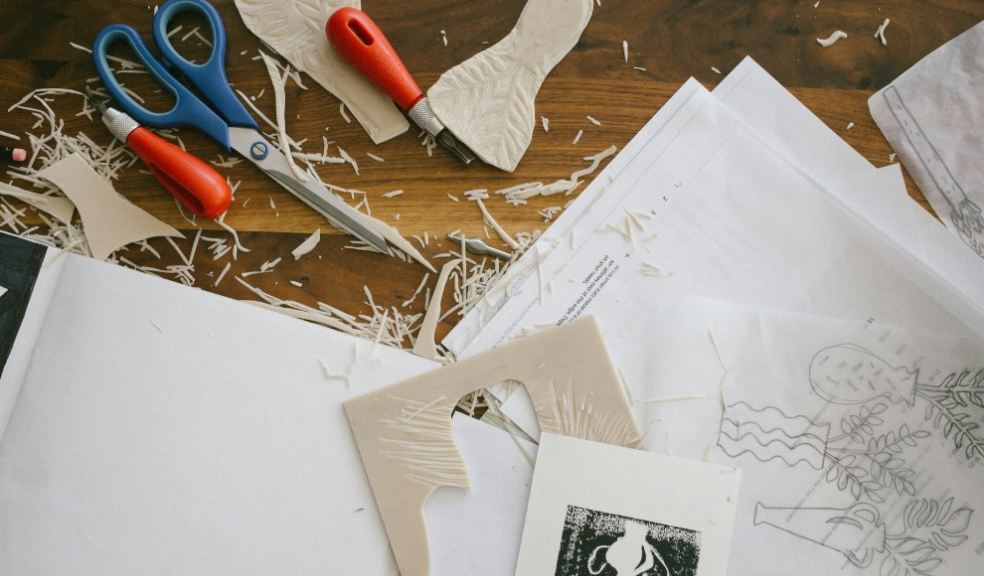
Exploring the History of Linocut Art: Techniques, Influences, and Evolution
Linocut art has a rich history that showcases its journey from a practical technique to a celebrated form of artistic expression. This printmaking technique uses linoleum as the medium along with a range of lino cutting tools for detailed linocut art. It offers remarkable accessibility and versatility for artists of all skill levels.
Beginning in the early 20th century, this art form gained popularity due to its unique ability to produce bold images and vibrant colours.
The evolution of linocut has been shaped by various notable artists who have pushed the boundaries of this medium. The works of pioneers, alongside its cultural impact, reflect the enduring legacy of linocut printmaking in the art world.
From its humble beginnings to its modern applications, linocut continues to inspire new generations of artists.
Key Takeaways
- Linocut is a versatile printmaking technique that uses linoleum as its medium.
- Notable artists have significantly influenced the evolution of linocut art.
- This art form has played an important role in the cultural landscape and continues to inspire creativity.
Origins and Evolution
Linocut art has a rich history that began in the late 19th century and evolved dramatically over the years. This art form gained traction through its accessibility and the creativity of numerous artists who embraced its techniques. Various movements and institutions played significant roles in shaping its development.
Rise in Popularity
Linocut printing experienced a surge in popularity in the early 20th century. Artists sought new, expressive ways to create prints.
The Grosvenor School of Modern Art, opened in London in 1925 by Claude Flight, became a focal point. Flight taught students to produce multi-colour linocuts using different blocks for each colour, helping to elevate the medium.
Key artists like Edward Bawden emerged from this school. His works showcased the potential of linocut to create vibrant imagery. The simplicity of the materials allowed for both beginners and seasoned artists to explore this medium.
The influence of movements such as German Expressionism also inspired many linocut artists, adding depth and emotion to their creations.
Historical Significance
The historical significance of linocut art cannot be understated. In the mid-20th century, it served as a bridge between traditional and modern printmaking techniques.
Artists recognised the value of linocut as a legitimate art form rather than merely a craft.
This period saw the first exhibition of British linocuts in 1929, which highlighted the works produced at the Grosvenor School. The impact of linocut art extended beyond individual artists, influencing the broader art community.
As a result, linocut became a prominent medium for political and social commentary, allowing artists to convey powerful messages.
Technical Aspects of Linocut Printmaking
Linocut printmaking combines specific materials and techniques to produce striking images. Understanding the tools and processes involved is essential for anyone interested in creating this unique art form.
Material and Tools
The primary material used in linocut printmaking is the linoleum block. This is a soft, pliable surface, making it easy to carve. Artists can also use rubber blocks for similar effects, though linoleum offers a unique texture.
For carving, artists typically use a variety of tools. Common tools include V-shaped chisels, gouges, and knives, each serving a different purpose. A sharp tool ensures clean lines and reduces the risk of mistakes.
Once the block is prepared, the correct ink is crucial. The ink must be thick enough to adhere to the raised relief surface but not so thick that it clogs details. Water-based inks are popular for their easy clean-up and range of colours.
Carving and Printing Techniques
Carving techniques significantly influence the final print. Artists may use reduction printing, where multiple layers of colour are built up by carving away parts of the block between print runs.
This method requires careful planning, as one cut affects the whole design.
The printing process begins by applying ink to the block. Artists can use rollers or brayers to evenly spread the ink over the carved surface.
Once inked, the block is pressed onto paper or fabric. A printing press can help apply even pressure, but hand pressing works too.
Proper pressure is vital; too much can blur details, while too little may not transfer the image. After printing, each linocut can be unique due to variations in pressure or ink application, adding to the artwork's charm.
Notable Artists and Works
Linocut art has a rich history marked by several influential figures and contemporary artists who have shaped its development. Their works highlight the technique's versatility and its power for social commentary, creativity, and innovation.
Influential Figures
Pablo Picasso is one of the most renowned artists associated with linocut. His works demonstrate a mastery of the medium, pushing its boundaries in ways that had never been seen before.
Sybil Andrews was another significant artist, known for her vibrant, dynamic compositions that captured the spirit of the British art scene.
Henri Matisse also experimented with linocut, particularly in his later years. His simple yet bold designs reflect his distinctive style.
German artists such as Ernst Ludwig Kirchner and Karl Schmidt-Rottluff contributed to the expressionist movement, using linocut to convey deep emotions and social messages.
Contemporary Influence
In the contemporary scene, linocut has found a new generation of artists who embrace its accessibility and expressiveness.
Angie Lewin is notable for her intricate botanical prints, which reflect her love of nature. Her work resonates well with modern audiences seeking organic and fresh designs.
Instagram has become a popular platform for linocut artists to showcase their creations. It allows them to connect with a wider audience and collaborate with other artists globally.
Many contemporary artists use this medium to address current issues, making linocut a powerful tool for both artistic expression and social commentary.
Cultural Impact and Legacy
Linocut art has played a significant role in both artistic expression and education. This printmaking technique has evolved, influencing countless artists and becoming a staple in the realm of fine art.
The innovative techniques used in linocut, including the graphic quality of lino prints, have fostered unique styles that resonate with expressionism.
Artistic Expression and Education
Linocut art allows artists to explore new avenues of creativity. The process involves carving a design into a linoleum block, inking it, and transferring the image onto paper. This hands-on technique encourages artistic exploration and self-expression.
Art institutions and educational programmes often include lino printing as part of their curriculum. By teaching this method, they introduce students to printmaking's history, methods, and contemporary applications.
The accessibility of linoleum and the simplicity of the tools make it an ideal medium for beginners.
Many well-known artists have embraced linocut, demonstrating its value as a form of fine art. The vivid, bold imagery produced in lino prints captivates viewers and has made linocut a respected art form within galleries and exhibitions.
The Future of Linocut Art
The future of linocut art looks promising, as artists continue to experiment with innovative techniques.
Modern artists are blending traditional linoleum block printing with digital methods, creating a dialogue between past and present.
As a result, newer generations are attracted to the medium, embracing its tactile nature. Workshops and community projects help keep the art form alive, encouraging collaboration and creativity.
The graphic quality of linocut prints remains relevant in today’s art scene. With the rise of sustainable practices, artists are also exploring eco-friendly materials for their prints. This shift may further enhance linocut’s appeal as an art form deeply connected to both tradition and modern values.
Frequently Asked Questions
This section addresses common questions about linocut art, its history, significant figures, and its impact on the art world. The details below highlight key aspects of this unique printmaking technique.
Who are some prominent figures in the development of linocut art?
Claude Flight was a significant figure in the early 20th century, teaching at the Grosvenor School of Modern Art. He introduced many artists to multi-colour linocut techniques.
Other notable figures include Ethel Gabain and Sybil Andrews, who were also instrumental in popularising the medium.
How has linocut art evolved over time?
Linocut art has transformed from simple black-and-white prints to vibrant multi-colour pieces. In the 1920s, artists began using different blocks for each colour, expanding creative possibilities. Today, artists continue to push boundaries with techniques and materials.
Can you outline a brief history of lino printing techniques?
Lino printing started in the mid-19th century as a flooring material. The technique became popular in the 20th century, particularly with artists like Flight. Over the years, artists have developed various methods, such as reduction printing and using multiple plates.
Who are some notable contemporary artists specialising in linocut?
Contemporary artists like Hannah Cantellow and Lucinda Rogers are known for their unique linocut styles. They blend traditional techniques with modern themes to create striking works. Their contributions highlight the continued relevance of linocut in today's art scene.
In what ways does linocut differ from other printmaking methods?
Linocut uses carved linoleum as the printing surface, making it distinct from woodblock printing, which uses wood. The softer texture of linoleum allows for easier carving and more detailed designs. Additionally, linocut often focuses on bold shapes and colours.
What impact has linocut art had on the broader art world?
Linocut art has influenced various modern art movements. These include Cubism and Futurism. Its accessibility has allowed many artists to experiment and contribute to the printmaking field. The technique continues to be a medium through which artists can express their creative voices.

















